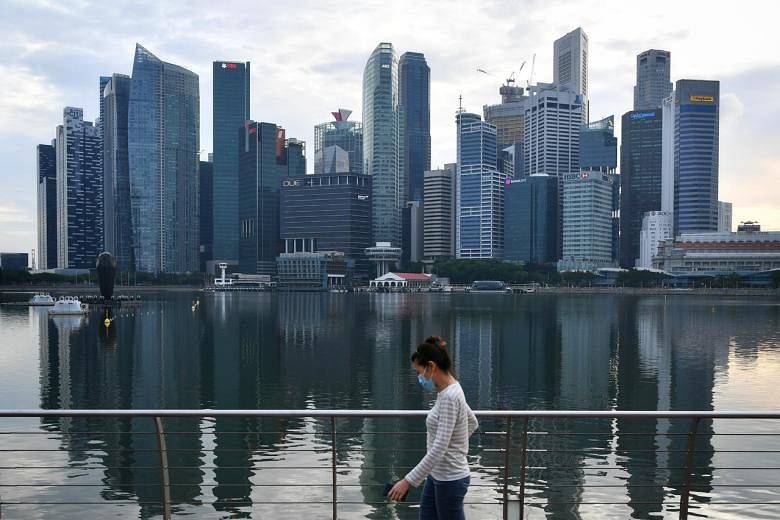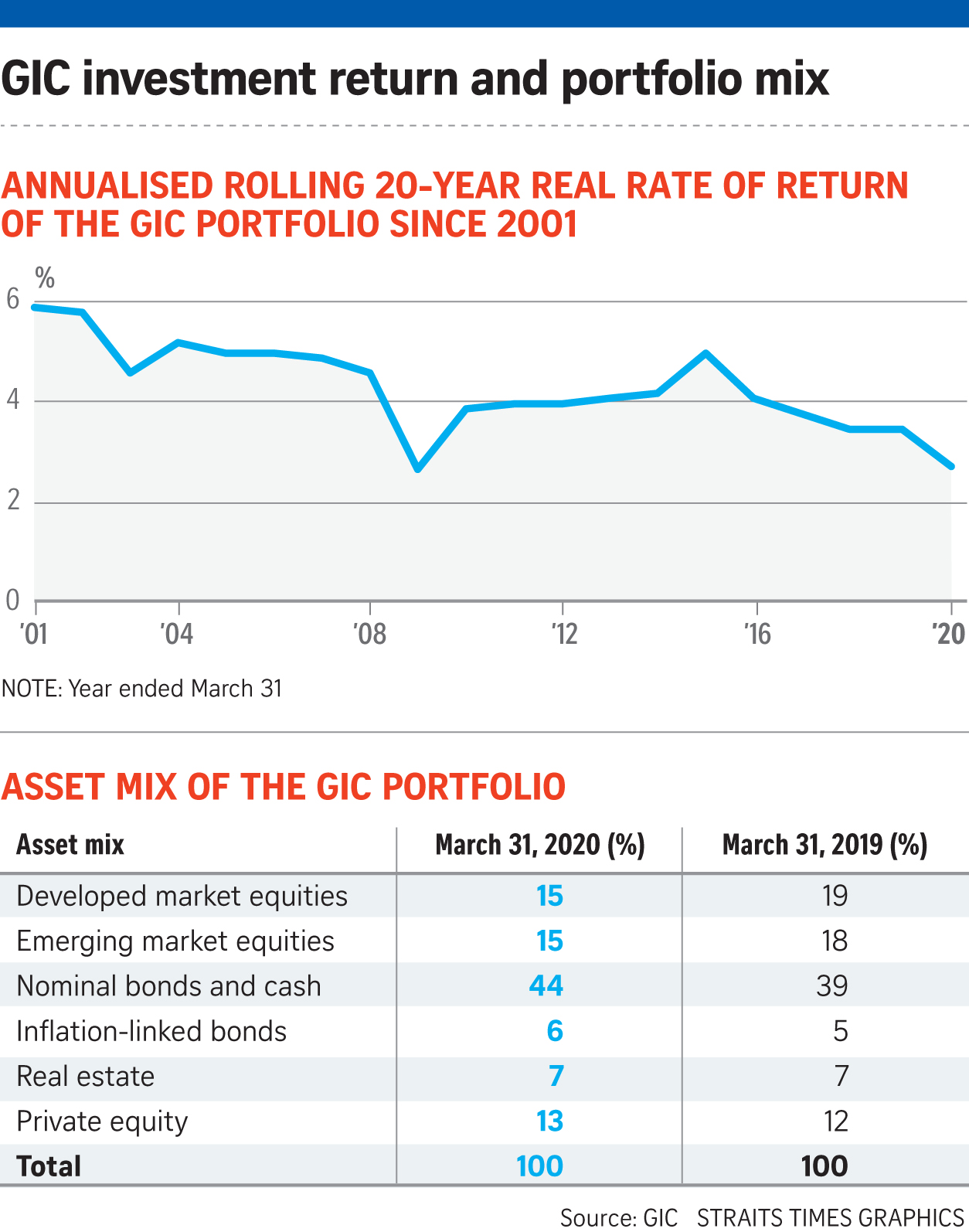Moves by sovereign wealth fund GIC to shore up its defences over recent years have helped it weather storms in global financial markets but it still took some hits.
The fund recorded an annualised rolling 20-year real rate of return of 2.7 per cent for the 12 months to March 31 - higher than global inflation but below the 3.4 per cent racked up in the previous finan-cial year. This decline is in part due to the way GIC calculates its rate of return.
The fund measures its performance by evaluating it over a 20-year period, which started in 2001 for the financial year just ended.
That marked a significant change as it meant the 12 months to March 31, 2000 - a boom period for technology shares - no longer figured in the calculation.
GIC chief executive Lim Chow Kiat noted that the lower rate of return for the latest financial year was largely due to the dropping out of a "very strong tech-bubble year return 21 years ago, rather than the recent market moves".
The real return over the last fiscal year is also the lowest since 2008/2009 - the period of the global financial crisis - when it was 2.6 per cent. GIC said its decision to take a more defensive stance going into the last financial year in the light of the increasingly risky global economy had also helped cushion the impact from the fall in equity markets across the world in the first quarter of this year.
The strategy involved increasing the proportion of lower-risk assets in its portfolio with bonds and cash comprising 44 per cent as at March 31, its highest since it adopted its latest investment framework in 2013 and a 5 percentage point increase from the previous year.
At the same time, the allocation to developed and emerging market equities fell in line with the decline in global share markets.
Mr Lim told yesterday's briefing: "I do think going forward, we have to be more differentiating across countries, across sectors, across companies, because the dispersion is likely to be very wide, and that if you find yourself holding assets which are... at the losing end, you may suffer permanent impairment.
"I think the need to recognise these divergences, dispersion, is going to be much greater, which means in terms of investment approach, we have to go deeper, we have to be more bottom-up."
Group chief investment officer Jeffrey Jaensubhakij noted that it has to consider which countries still have bonds with positive yields, and whether they have policies in place that will sustain those yields and shore up their currencies.
GIC is also evaluating which countries are likely to have the monetary and fiscal policies to generate domestic growth without having to depend on global trade picking up while others may need to borrow in order to fund investment or growth in the current environment, he said.
There was little change in the fund's geographical mix over the year, with the United States accounting for more than one-third of assets, and Asia about 32 per cent.
Mr Lim said that GIC does not expect the proportion allocated to the US to change much: "We still see a lot of good prospects in that area.
"I think what we would be more concerned about would be ac-tually a number of the emerging market countries, and we are monitoring closely how they are dealing with (issues), especially this healthcare crisis."
GIC expects its exposure to Asia will rise in the longer term, enabling it to ride on its trend of growth, Mr Lim said.
Although specifically when this exposure increases "depends very much on those enterprises", he added.
GIC noted in its report that it expects Asia will generate growth over the long term from urbanisation, rising income among the middle class, investments in infrastructure and human capital, and deeper regional integration of economies and capital markets.
The fund's investments in Asia over the past year included a US$500 million (S$690 million) joint venture with logistics real estate developer ESR Cayman to develop facilities in China and a 20 per cent stake in Myanmar's Yoma Bank.



